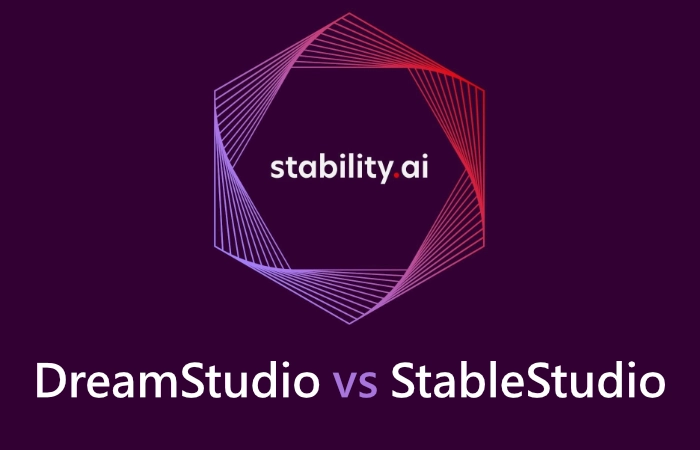In the rapidly evolving world of artificial intelligence, Stability AI has been a key player, particularly in the realm of image generation. Its flagship product, DreamStudio, has been a popular online service for generating images. However, in a recent move towards open-source development, Stability AI has introduced StableStudio, a new platform that promises to revolutionize Stable Diffusion image generation. But what are the differences between DreamStudio vs StableStudio in this quick guide will provide an overview for you to better understand the features of each.
DreamStudio, the official online service of Stability AI, has been a go-to platform for millions of users to create images. It operates on a paid model, where users pay for the compute and API usage. The platform was recently upgraded to use SDXL, Stability AI’s latest image generation model. DreamStudio was initially conceived as an animation studio for Disco Diffusion, but with the advent of Stable Diffusion in the summer of 2022, the focus shifted towards image generation. Despite this shift, the goal of creating a multi-modal experience for generative AI has remained constant.
DreamStudio vs StableStudio what are the differences?
Stability AI believes that the future of image generation lies in open-source development. This belief led to the creation of StableStudio, an open-source version of DreamStudio. StableStudio is currently limited to the paid API only, but plans are underway to incorporate Automatic1111 as a back-end in the near future.
StableStudio represents a new chapter in Stability AI’s imaging pipeline. It showcases the company’s commitment to advancing open-source development within the AI ecosystem. The platform is designed to foster community-driven development, which Stability AI believes can outpace anything a single company develops. The aim is to work with the broader community to create a world-class user interface for generative AI, which users fully control.
Other articles you may find of interest on the subject of Stable Diffusion :
While DreamStudio will continue to be Stability’s hosted StableStudio implementation, the focus is on creating a project that can outpace anything a single company develops. The developers are working on expanding StableStudio’s capabilities, including a chat interface and a new plugin system. This plugin system could support local inference through web GPU and stable diffusion Webby, potentially allowing users to generate images locally on their PC.
DreamStudio vs StableStudio
Both AI art generators are similar in many ways, but there are key differences. StableStudio has removed specific branding and replaced API calls with a plugin system. It has also removed Stability-specific account features like billing and API Key Management. The program is available for free on the StableStudio GitHub page, but users need to have node.js and yarn installed to use it. Users also need an API key to use the default Stability AI plugin to generate images.
DreamStudio features
- Official Online Service: DreamStudio is the official online service of Stability AI for generating images.
- Paid Model: Requires payment for compute and API usage.
- Latest Model: Recently upgraded to use SDXL, Stability AI’s latest image generation model.
- Initial Focus: Originally aimed at being an animation studio for Disco Diffusion, later shifted to image generation.
- Hosted by Stability AI: Will remain as the hosted StableStudio implementation.
- Multi-modal Goals: Aims to offer a multi-modal experience for generative AI.
- Limited to Cloud: No current support for local installations
- Branding and API: Includes Stability-specific account features like billing and API key management.
StableStudio features
- Open-Source: Released as an open-source version of DreamStudio.
- Community-Driven: Designed to foster community-driven development and controlled fully by users.
- Paid API: Initially limited to the paid API, with plans to add Automatic1111 as a back-end.
- Future Features: Plans include a chat interface, new plugin system, and local inference through WebGPU.
- Extensibility: Open to external developers with a public repository and planned bounties for improvements.
- No Branding: Specific branding and API calls are removed, replaced by a plugin system.
- Local Requirements: Requires node.js and yarn for installation, along with an API key for the default plugin.
- Cloud-Based: Currently operates on the cloud using Stability AI’s technology, with plans for more optimized local operation.
Currently, StableStudio is cloud-based and uses Stability AI’s technology. While it is not as optimized as other programs, it could be a good option for image generation in the future, especially with the planned support for extensions and plugins.
Stability AI’s move towards open-source development with StableStudio represents a significant shift in the AI image generation landscape. While DreamStudio continues to be a robust platform for image generation, StableStudio’s open-source nature and planned features make it a promising contender in the field. As the capabilities of StableStudio expand, it will be interesting to see how it shapes the future of generative AI.
Filed Under: Guides, Top News
Latest Aboutworldnews Deals
Disclosure: Some of our articles include affiliate links. If you buy something through one of these links, Aboutworldnews may earn an affiliate commission. Learn about our Disclosure Policy.







